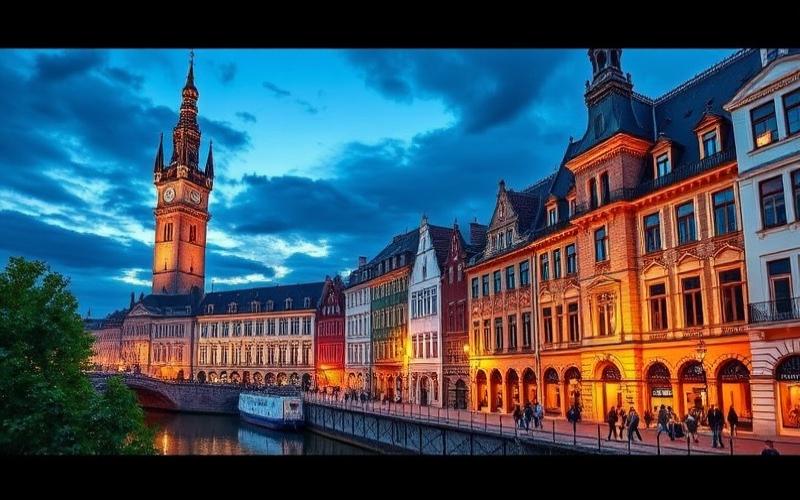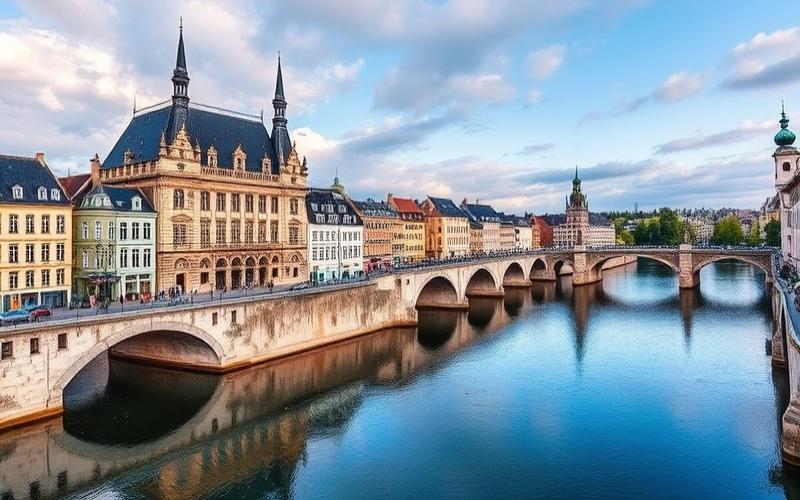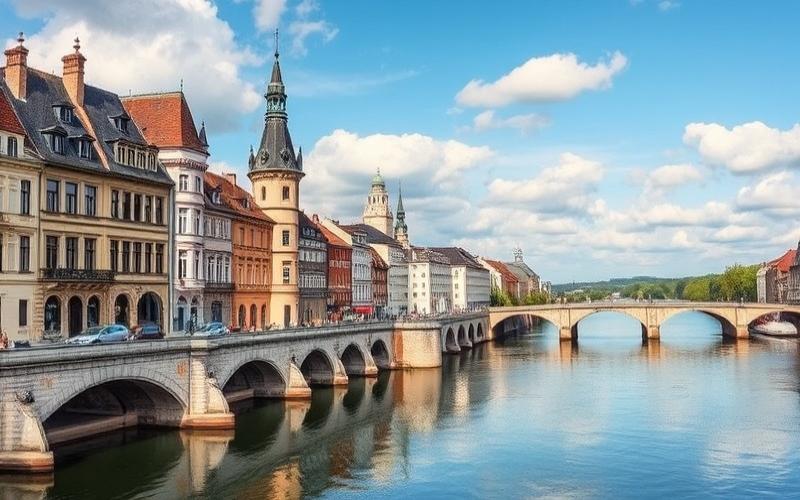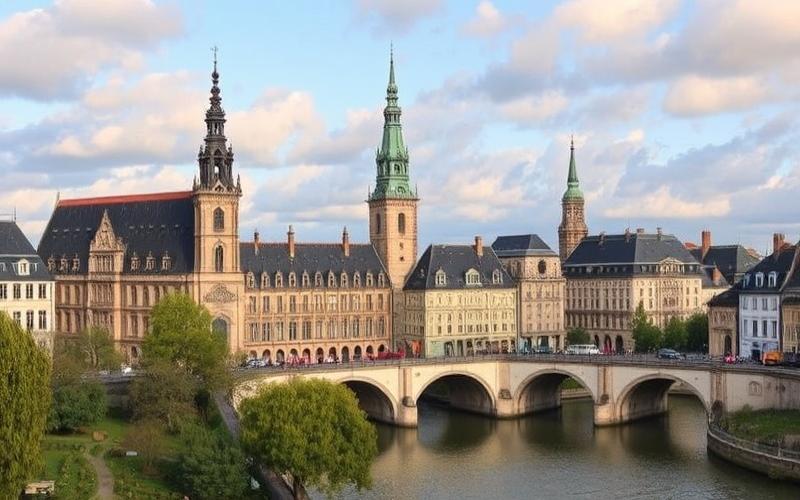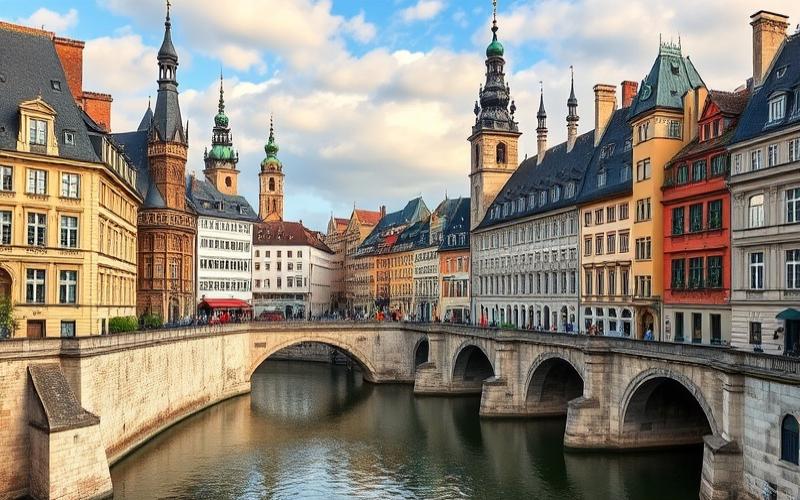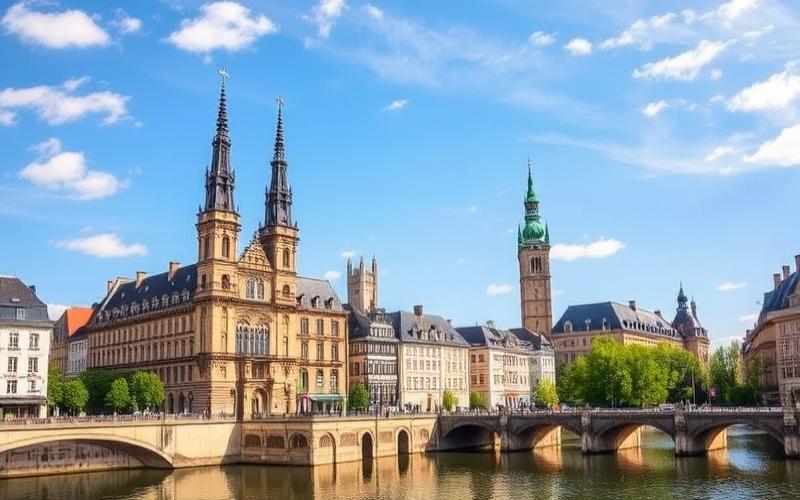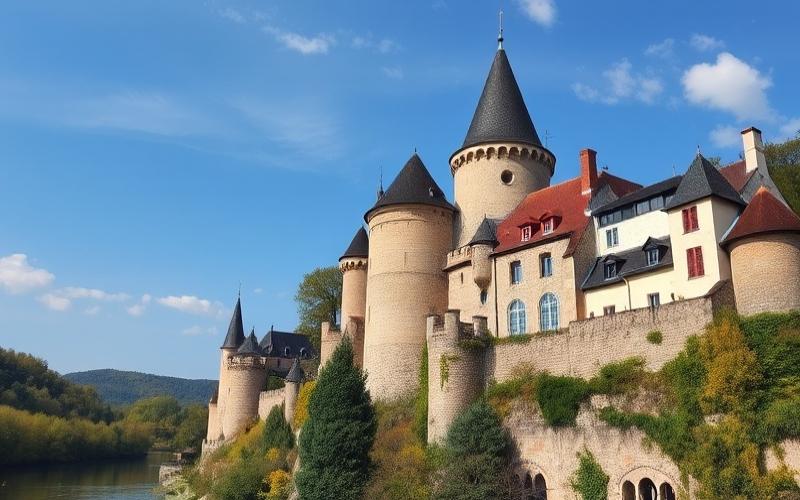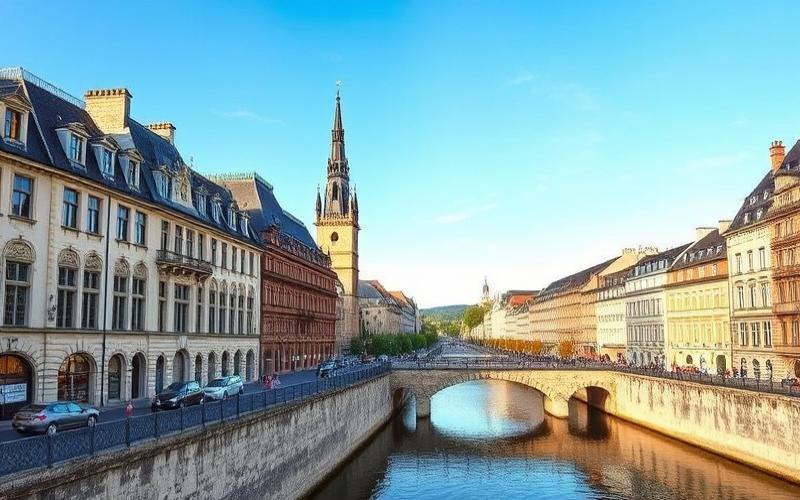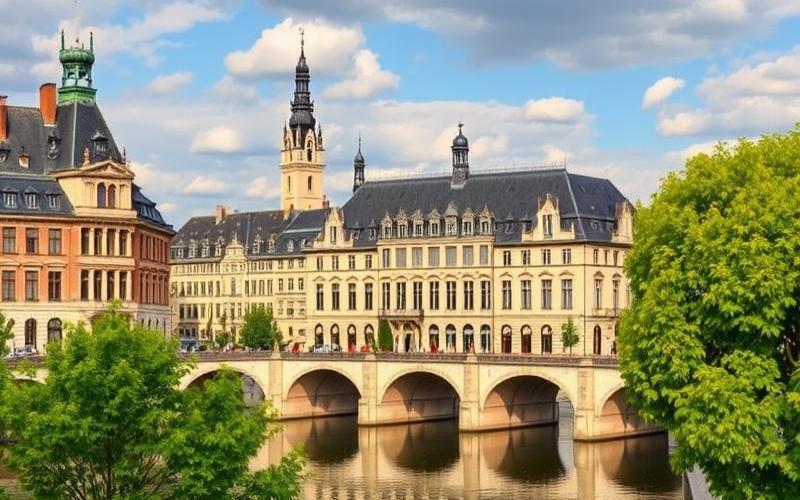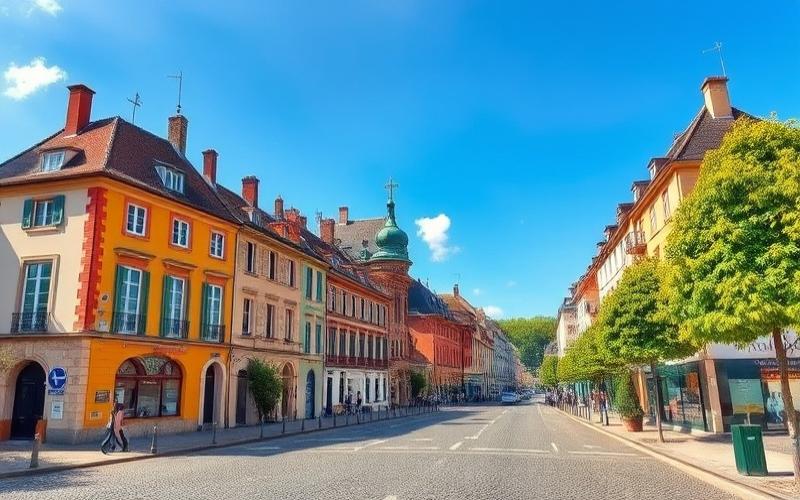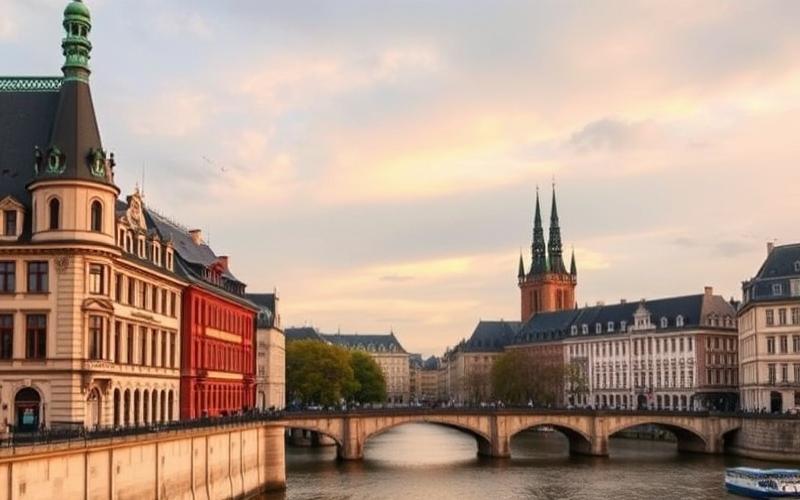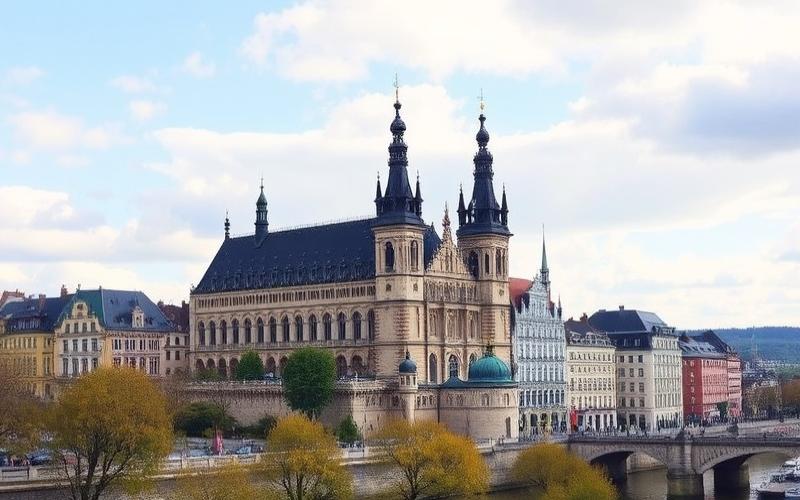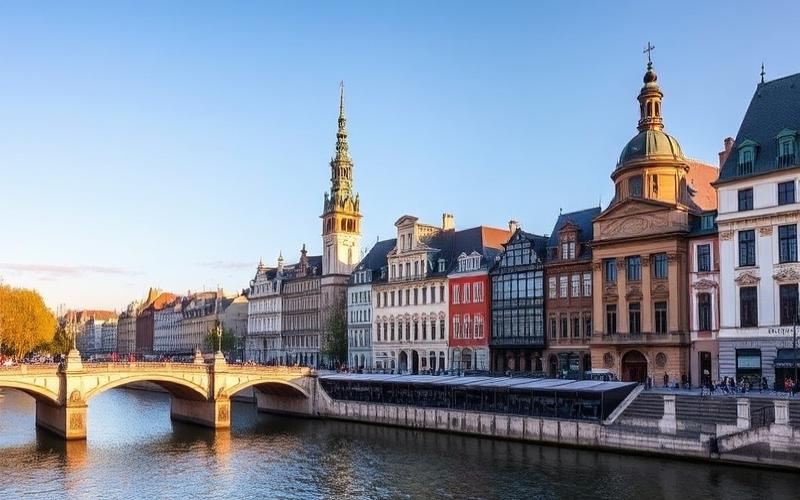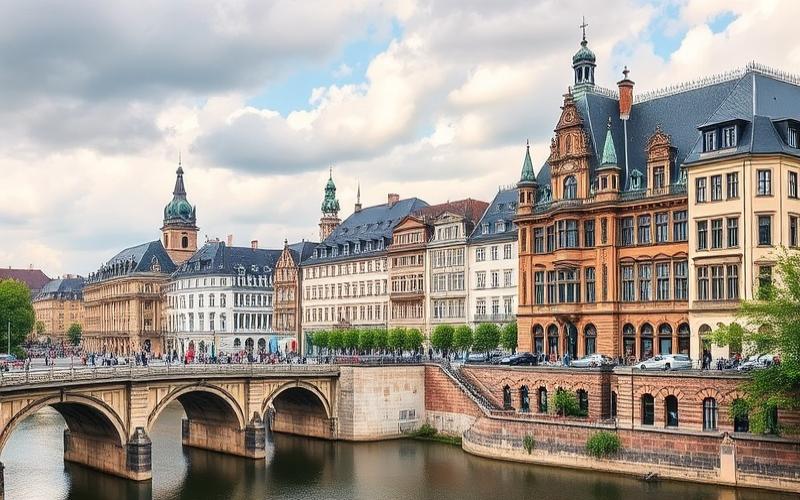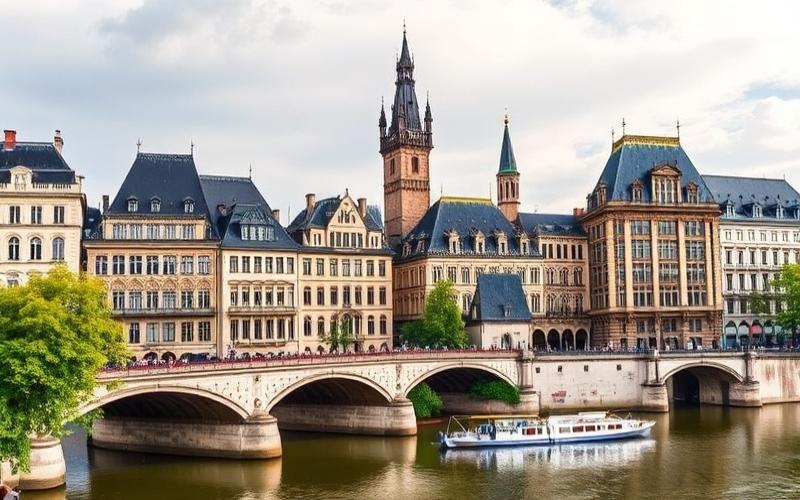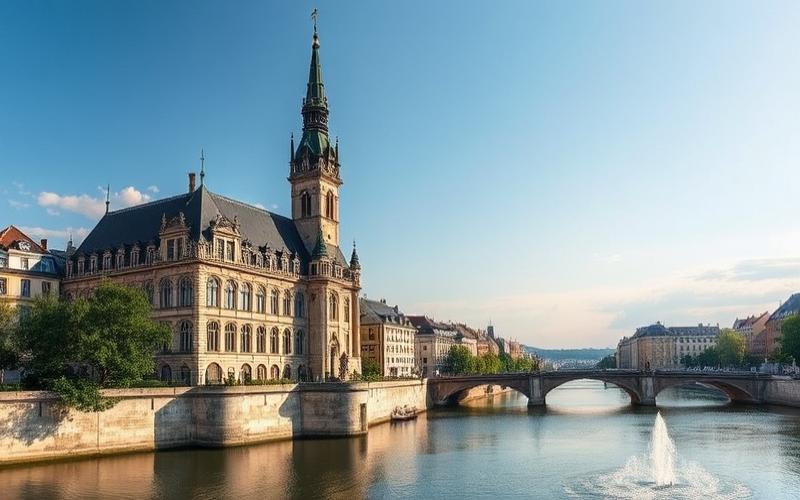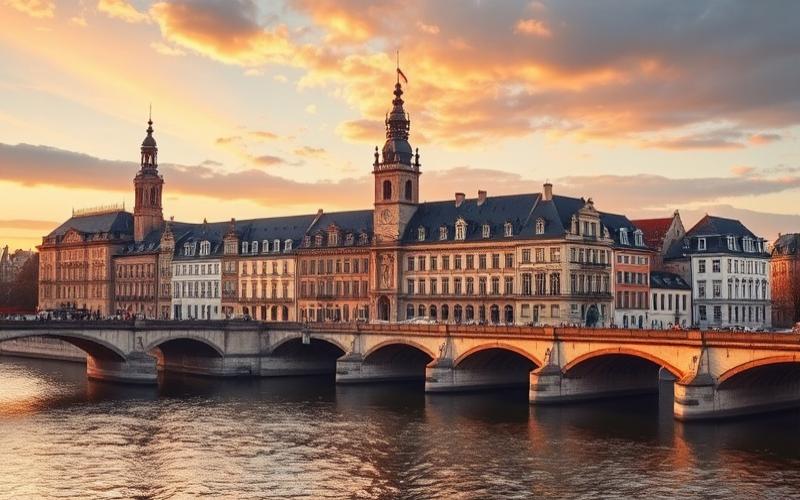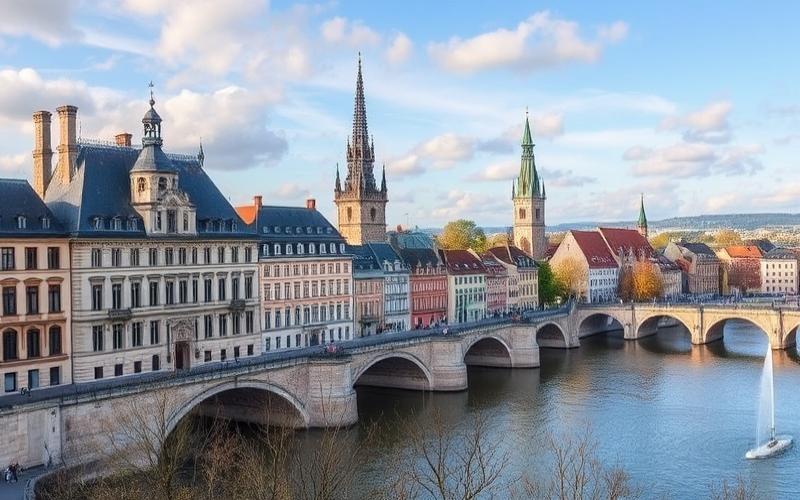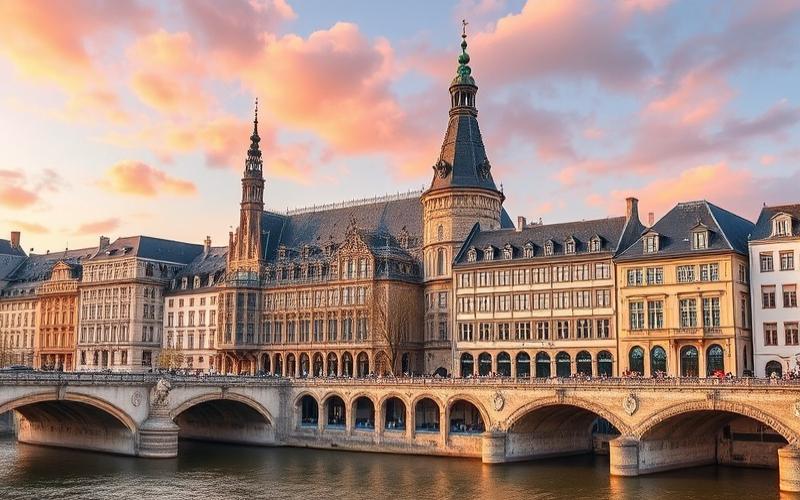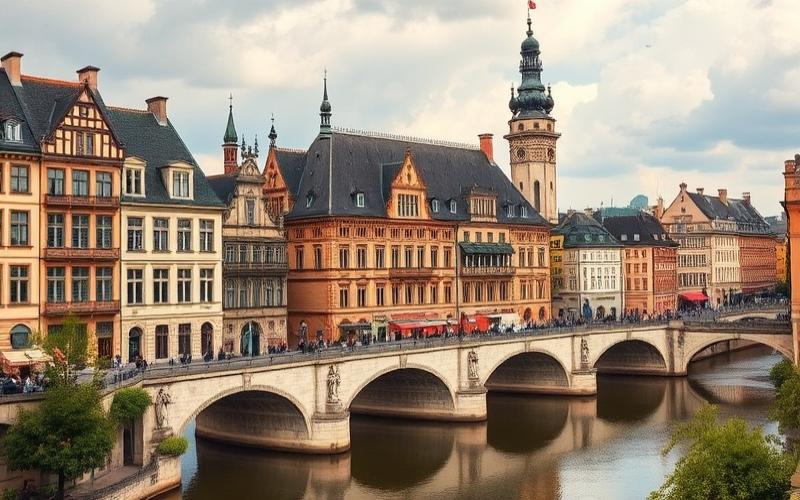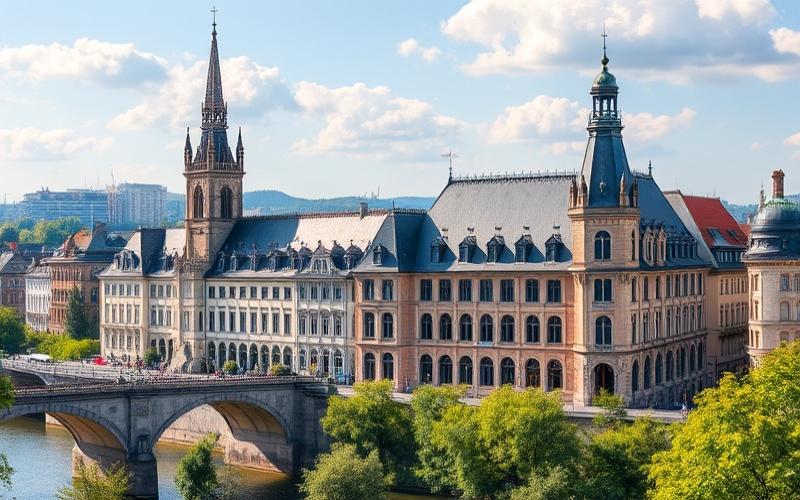
 Published on and written by Cyril Jarnias
Published on and written by Cyril Jarnias
The Grand Duchy of Luxembourg, though modest in size, occupies a strategic position at the heart of Western Europe. This landlocked state, covering an area of 2,586 km², stands out for its geographical diversity and its economic and political importance on the European stage. Let’s dive into discovering this fascinating country, from its geographical location to its main regions and cities.
Geographical Location: At the Crossroads of Europe
Luxembourg is situated in the heart of Western Europe, sharing its borders with three countries:
- Belgium to the north and west (148 km shared border)
- Germany to the east (138 km border)
- France to the south (73 km border)
This central position gives it a role as a European crossroads, both economically and culturally. The country extends a maximum distance of 82 km from north to south and 57 km from east to west, making it one of the smallest states in Europe.
Luxembourg holds a strategic place within the “Greater Region”, a cross-border cooperation area that also includes regions of France, Germany, and Belgium. This situation fosters exchanges and mobility, particularly for cross-border workers who cross the borders daily.
Geographical Regions: Between Oesling and Gutland
The Luxembourgish territory is divided into two main geographical regions, each offering distinct landscapes and characteristics:
The Oesling
Located in the north of the country, the Oesling (also called Éislek) covers about one-third of the Luxembourgish territory, or 828 km². This region is part of the Ardennes massif and is characterized by:
- Hilly and wooded landscapes
- Plateaus intersected by deep valleys
- The country’s highest point, Kneiff, which rises to 560 meters in altitude
- Two natural parks: the Our Nature Park and the Upper Sûre Nature Park
The Oesling offers an ideal setting for nature lovers and hikers, with its dense forests and winding rivers.
The Gutland
The Gutland, or “Good Country,” occupies the remaining two-thirds of the territory in the center and south of Luxembourg, covering an area of 1,758 km². This region is distinguished by:
- Gentler, rolling landscapes
- Significant agricultural activity
- The Moselle valley, renowned for its vineyards
- The mining basin in the south, a testament to the country’s industrial past
The Gutland is also home to the capital, Luxembourg City, as well as the majority of the country’s population and economic activity.
Main Cities: A Dynamic Urban Network
Although Luxembourg is a small country, it has several important cities that play a crucial role in its economic and cultural development.
Luxembourg City: The Cosmopolitan Capital
Luxembourg City is by far the largest city in the country, with a population of 134,697 as of January 1, 2025. As a national and European capital, it stands out for:
- Its historic center, a UNESCO World Heritage site
- Its role as an international financial center
- Its cultural diversity, with over 170 nationalities represented
- Its status as the seat of numerous European institutions
The City of Luxembourg is the beating heart of the country, combining history, modernity, and multiculturalism.
Other Important Cities
After the capital, the most populous cities in Luxembourg are:
- Esch-sur-Alzette (37,455 inhabitants): the country’s second city, a former industrial center turned dynamic cultural hub
- Differdange (30,364 inhabitants): the third city, known for its steelmaking past and recent university development
- Dudelange (22,043 inhabitants): a major city in the south, undergoing post-industrial transformation
- Pétange (20,903 inhabitants): a dynamic border town
These cities, mainly located in the south of the country, form a dense and interconnected urban network, contributing to Luxembourg’s economic dynamism.
A Country of Many Facets
Despite its small size, Luxembourg boasts varied geography and a complex territorial organization. From its Ardennes forests in the north to its Moselle wine valleys in the east, and its mining basin in the south, the country offers a remarkable diversity of landscapes and environments.
Luxembourg’s central position in Europe, combined with its multilingualism and dynamic economy, makes it a true European crossroads. This unique situation contributes to its attractiveness, both for international companies and cross-border workers, thus shaping a country where the international dimension is omnipresent.
Good to Know:
Luxembourg, despite its small size, stands out for its geographical diversity, ranging from the Ardennes forests in the north to the Moselle wine valleys in the east. Its central position in Europe and its status as an economic and cultural crossroads make it a unique country, where the international dimension is omnipresent in all spheres of society.
Disclaimer: The information provided on this website is for informational purposes only and does not constitute financial, legal, or professional advice. We encourage you to consult qualified experts before making any investment, real estate, or expatriation decisions. Although we strive to maintain up-to-date and accurate information, we do not guarantee the completeness, accuracy, or timeliness of the proposed content. As investment and expatriation involve risks, we disclaim any liability for potential losses or damages arising from the use of this site. Your use of this site confirms your acceptance of these terms and your understanding of the associated risks.

